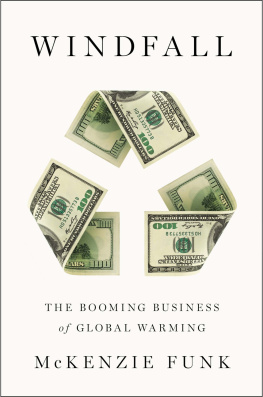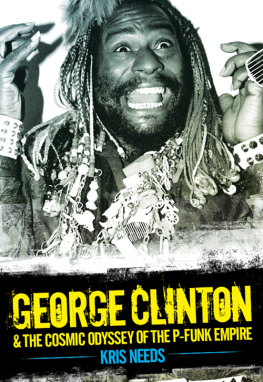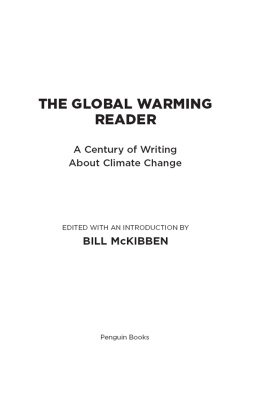THE PENGUIN PRESS
Published by the Penguin Group
Penguin Group (USA) LLC
375 Hudson Street
New York, New York 10014

USA Canada UK Ireland Australia New Zealand India South Africa China
penguin.com
A Penguin Random House Company
First published by The Penguin Press, a member of Penguin Group (USA) LLC, 2014
Copyright 2014 by McKenzie Funk
Penguin supports copyright. Copyright fuels creativity, encourages diverse voices, promotes free speech, and creates a vibrant culture. Thank you for buying an authorized edition of this book and for complying with copyright laws by not reproducing, scanning, or distributing any part of it in any form without permission. You are supporting writers and allowing Penguin to continue to publish books for every reader.
Photographs by the author
ISBN 978-0-698-15156-7
Version_1
For Jenny and Wilson.
(Mostly, she says, for him.)
CONTENTS
PART ONE
PART TWO
PART THREE
INTRODUCTION
T he contract had called for either a boa or an anaconda, whichever would best handle the crowds, and in the end the bankers got the latter: a green anaconda, six feet long and eighty-five pounds, which hung from the neck of a long-haired snake handler who lurked amid the exotic plants, next to the fake waterfall and the model dressed in Amazonian garb. Nearby were two scarlet macaws in wire cages, a Brazilian dance troupe, and a hut offering free organic smoothies. At the base of an eighteen-foot waterfall were giant koi, swimming in a pond: forty-five hundred gallons of warm, filtered water that would soon be dumped into the East River. The jungle was in a tent that was on the promenade at the South Street Seaport, in lower Manhattan. Thirty by sixty feet, suffused with a light mist, and heated to eighty degrees, the tent had white sides and a clear roof through which visitors could just make out the skyscrapers of Wall Street. It was cold outside, a typical thirty-nine-degree February day in early-twenty-first-century New York, so those beckoned inside by the street teamtwo models walking the streets to entice passersby to the eventhad to quickly shed their jackets and scarves, so stark was the difference in temperature. Which was, of course, the point.
The stunt was a coming-out party, the most expensive stop on Deutsche Banks eighty-event The Investment Climate Is Changing road show held across the United States. In scale and imagination, it was rivaled only by the ski village and ninety-foot snowboard slope the bank had constructed a few weeks earlier along Rodeo Drive in Beverly Hills: chalets decorated with deer-antler chandeliers and wooden snowshoes, Deutsche Bankbranded ice sculptures, models dressed as snow bunnies, bottled water from Iceland, faux snow blown down from the roof of the Versace store, thirty tons of more realistic snow created by a wood chipper and a freezer truck full of ice blocks, and two pro snowboarders who would later complain that nobody had built them a proper jump. Together, the Manhattan and Beverly Hills events cost $1.5 million, but they were carbon neutral, the bankers boasted, their greenhouse emissions offset by investments in a biogas project in India. At South Street Seaport, every attendee was given a certificate from the Carbon Credit Company as proof. The jungle party, which lasted three hours, produced 152 tons of greenhouse gases, which the average Indian would need three lifetimes to match.
Before a DJ set by the Brazilian Girlsa group with no actual Brazilians and only one girlthe bankers held a press conference. It was early 2008, and as the world was still reeling from a record melt in the Arctic and a scary film by Al Gore and a bleak report by the Intergovernmental Panel on Climate Change (IPCC), half a dozen major investment houses had launched global-warming-themed mutual funds. Deutsche Banks was the $2.9 billion DWS Climate Change Fund. The jungle event was meant to promote it. Without taking a position on climate change, a press release had explained, the DWS Climate Change Fund is on the cutting edge of climate change investing. The events objective was not simply to show that climate change is happening, said the executive Axel Schwarzer, but that it creates related climate change investment opportunities. Another release went further. The debate around climate change is shifting away from cost and risk, it said, toward the question of how to capitalize on exciting opportunities. Nothing as big and universal as climate change could be all bad. An ecological catastrophe was not necessarily a financial catastrophe for everyone.
Deutsche Banks chief climate strategist, Mark Fulton, worked in midtown in a building on Park Avenue, and I visited him there after the road show was done, clearing security and then riding a silent elevator to the twenty-seventh floor. His was a corner office, but it was small and cluttered with papers, and Fulton, an Oxford-educated Australian, looked as much scientist as capitalist. His desire to fight climate change was genuine. He told me hed read the Club of Romes Limits to Growtha neo-Malthusian take on the planets carrying capacityas a schoolboy in the 1970s. It made quite an impact, he said. They were talking about everything running out: What are we going to do? We have to change the way we live! Instead of working for Greenpeace, which hed considered after graduation, he became a stockbroker, then an analyst, and hed eventually helped Deutsche Bank identify global warming as a megatrend that could generate profits for decades. Its always helped me, climate change, in my career, he joked.
While the DWS fund invested most heavily in the technology to build a greener worldin wind power and solar power, in smart grids and smarter electrical metersit had bought other stocks, too: companies that fit the portfolio not because they could help fight climate change but because the warmer the world, the less habitable it became, the bigger the windfall. They were a tacit recognition that we were already failing to stop climate change. There was the planets largest water company, Veolia, which manages pipes and builds desalination plants in seventy-four countries on five continents. Monsanto and Syngenta, ag-biotech giants that were tweaking genes to develop drought-resistant crops. And Viterra, a fast-growing agribusiness in temperate Canada. The fund also had shares of Duoyuan Global Water, one of the biggest water-treatment companies in desiccating China, and two fertilizer multinationals, Yara and Agrium. When I asked Fulton how the bank planned to capitalize on rising sea levels, he mentioned a small play in a Dutch dredging company, Royal Boskalis, which had just rebuilt an island in the Maldives inundated by the 2004 tsunami. Where are you going to get seawall expertise but from the Dutch? he asked.
Other climate investors told a similar story. They bought clean tech, green tech, the building blocks of the new, low-carbon economybut they were also starting to hedge. In London, the Schroder Global Climate Change Fund was investing in Russian farmlandcheap, fertile soil suddenly made dear by milder winters and drought-fueled global food crisesand its manager was taking the logic a step further, buying stock in supermarket chains such as Carrefour and Tesco. If climate change will be a negative for crop yields, he told me, then people will just have to spend more on food. Retailers are a clear beneficiary. Across town, another fund manager explained why he was bullish on the reinsurers Munich Re and Swiss Re. As natural disasters start to be more common, he said, as climate change starts to cause flooding and droughts, insurance companiesreinsurers in particularshould get pricing power. Because it allows insurers to jack up rates, hurricane season is actually quite a positive thing. A partner at a storied Wall Street investment bank showed me photographs of Ukrainian farmland and said his firm had tried to buy up vast tracts of it. Soviet-era collective farms had reverted to pseudo-subsistence agriculture, he said. You could come to these guys and get thousands of hectares for a few bottles of vodka and, like, two months of grain. You could literally give them vodka and grain.













